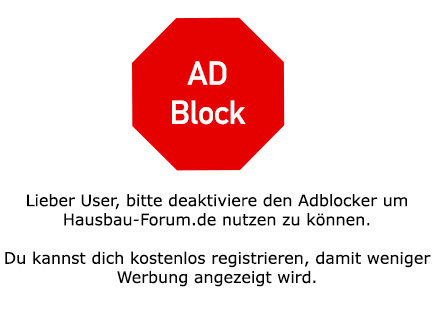KlaRa
2016-03-22 09:57:54
- #1
Hello "werschtl", a heated screed certainly does not constitute a "defect"! But this installation method as "screed on insulation layer" (by the way regulated in DIN 18560 Part 2) was not or is not the focus. Rather, it was the - let's say "strange" - hints and terms that were thrown into the ring during the participation on this topic. If small flakes come off a screed surface - as you now describe - the subsequent installer will have to carefully consider whether to remove them himself or raise concerns. The latter approach might be the right one if (which I of course cannot judge from a distance) the screed is defective. In this case, a written notice of defects would have to be issued to the screed layer. If now your tiler takes the matter into his own hands, the screed layer is immediately released from responsibility and warranty, since the tiler has accepted the screed work as proper! You may realize at this point that it might not be so simple after all. As far as your comments, which you conveyed, were taken directly from the tiler’s statements without embellishment, my lines still apply! The tiler, like the floor and parquet layer, only has the obligation to carry out a so-called cleaning grinding. The casual expression in construction jargon is: "He just runs the machine over it once." He does not have to do more, except remove any dirt deposits settled in the meantime from the screed surface. Removing flake-shaped detachments of the screed surface, no, that certainly does not belong to his tasks and, as I mentioned before, may have legal consequences. For example, if the screed surface has significant defects (which your tiler does not recognize, although he should), and he accepts the screed in any way, then the follow-up costs for the proper completion, which you as the builder can claim, remain solely with him. The screed layer will lean back smiling and whistle a tune. Rightly so! ------------------------ PS: I am writing all this not because I am bored these days or a desire for recognition makes me pick up the pen, but rather to contribute my experience here in this forum and to warn builders like you against missteps (also by others). Best regards: KlaRa
